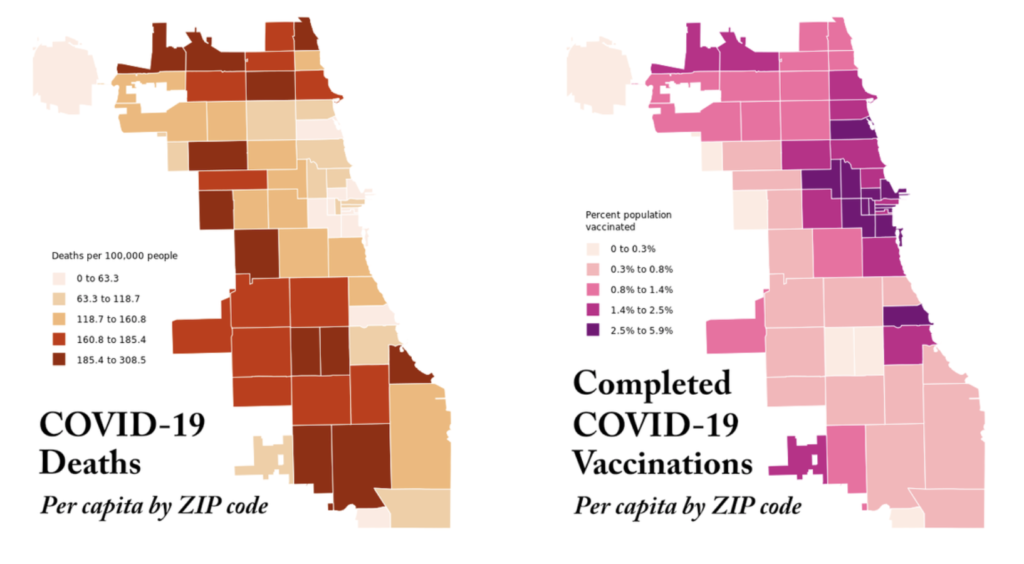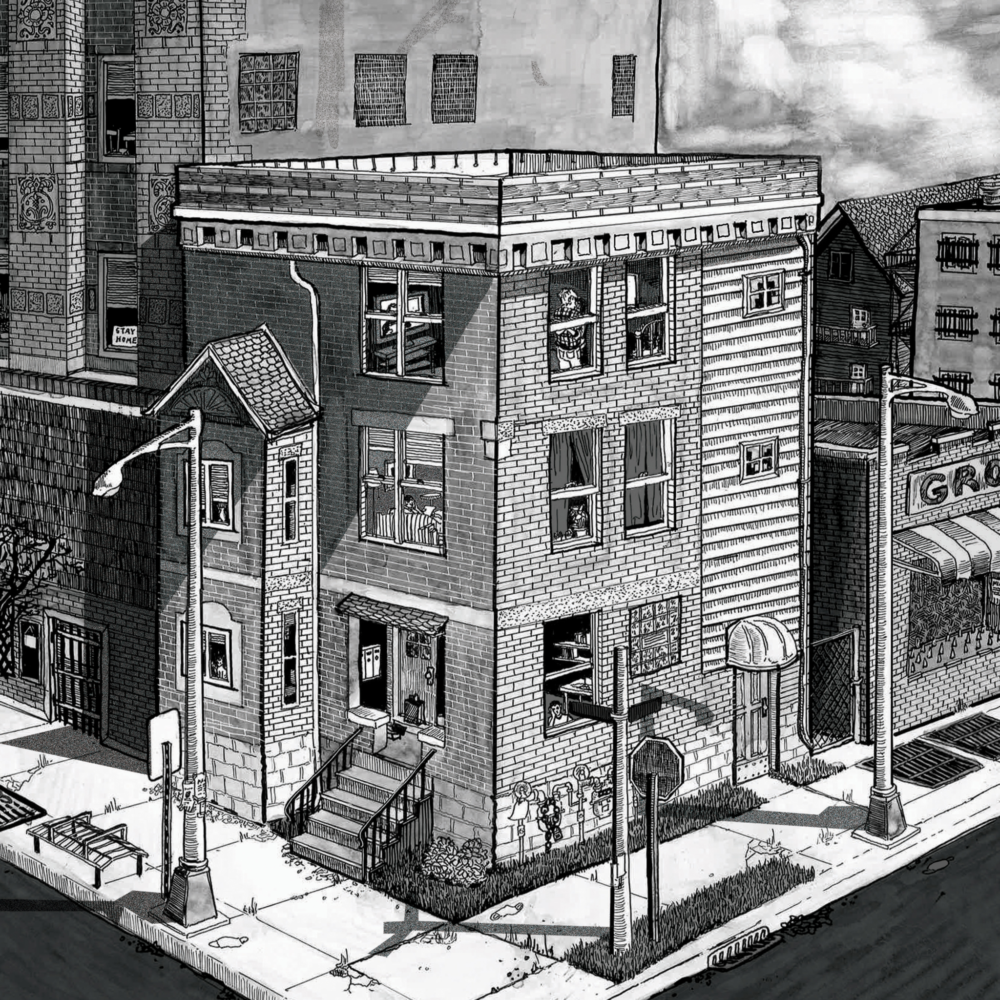Last year we couldn’t publish our annual Housing Issue due to the uncertainty of COVID-19, but this year we found it appropriate to bring back the special issue and look at housing through the pandemic lens.
On January 25, the City of Chicago entered phase 1b of its vaccination plan. The same day, South Side Weekly launched its open-source Twitter bot, created by Bea Malsky and Charmaine Runes, which visualizes relative concentrations of COVID-19 deaths next to fully vaccinated residents to date. Note that this data represents where fully vaccinated Chicagoans live, not where they work or where they received the vaccine—so far suggesting a glaring disparity in both deaths and immunization along race and income.
Predominantly Black and Latinx ZIP codes continue to bear the brunt of COVID-19 fatalities, yet these communities have the lowest rates of complete vaccination in Chicago. Chicago Department of Public Health Commissioner Dr. Allison Arwady acknowledged that the majority of Chicagoans who were vaccinated are white. City officials said they plan to address this by focusing on fifteen predominantly Black and Latinx neighborhoods where many essential workers reside and by improving upon its demographic data collection.

Our daily tracker pulls data directly from the Chicago Data Portal. The first map illustrates the number of COVID-19 deaths per 100,000 residents in each ZIP code, while the second map shows the percent of residents in each ZIP code who have received a complete dose of a COVID-19 vaccine, which currently means that they have received two doses of either the Pfizer or Moderna vaccine.
These maps do not tell the whole story of the city’s COVID-19 vaccine rollout, but we hope they encourage people to ask questions about who has access to vaccines and who ultimately receives them—and whether lack of access is a reflection of the phased rollout, community access to medical care, vaccine hesitancy, or Chicago’s systemic inequality and racism.
The bot will post updated maps every evening at https://twitter.com/ChiVaxBot.
In this issue
The Displacement of Chinatown’s Low-Income Residents is Aggravated by COVID-19: Data from the Chinese American Service League shows an exodus to the South and West
Chicago’s Winter Homeless Count May Be Inaccurate, Critics Charge: Chicago’s annual homeless count provides a “snapshot” of who is sleeping on the street, but critics say it’s inaccurate and can be traumatic.
CHA Falls Far Short in Housing Voucher Approvals: NYC’s Housing Authority completed ninety-six percent of tenancy approvals in under thirty days; during the same period, CHA completed thirty percent
Resisting Eviction: A building in limbo is housing people during the pandemic, but for how long?
Tenant Unions Form to Cope with the Crisis: The formation of tenant unions across the city is just the first step in a greater project that brings self-determination to tenants
Where to Find Housing Support During the COVID-19 Pandemic
4 Solutions That Could Stem the Housing Crisis
Undocumented Renters Carry Pressure of Housing Crisis With No Safety Net
✶ ✶ ✶ ✶
Correction: A story on page nine of the January 20 issue (“Learning In Lockdown”) incorrectly stated twenty incarcerated students were enrolled in North Park University’s “Black Faith Matters” correspondence class. In fact, seventy students enrolled. The Weekly regrets this error.


